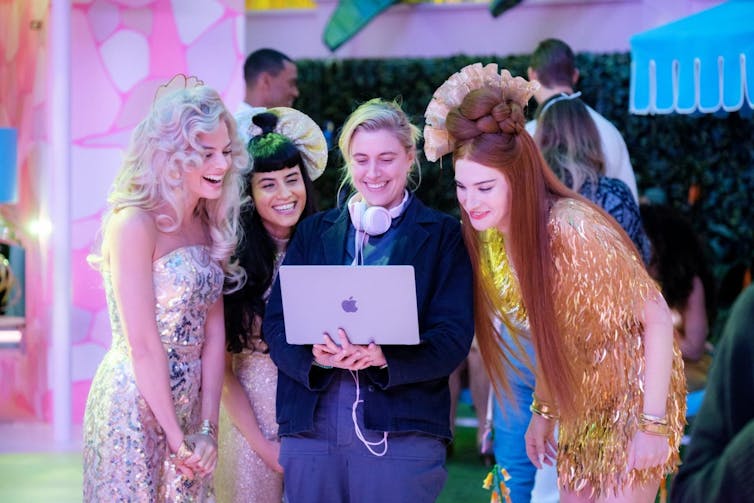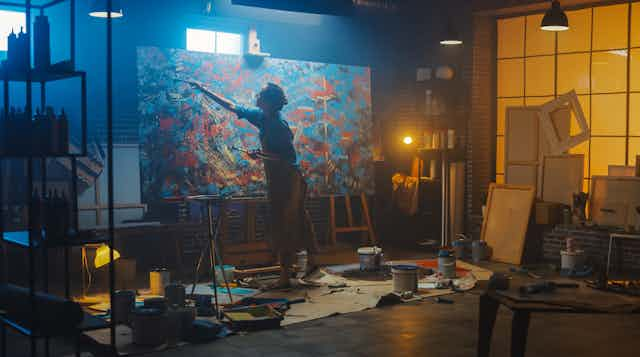In our constant quest to understand artists and their genius, we often put them on a pedestal, or we assume that they are otherworldly beings with incomprehensible thoughts. This myth, though common, distances us from everything they share with us. It makes us feel that their feats and successes are far beyond our reach.
It is important to demystify the idea that artists are radically different from us. We can do this by looking at how their behaviour is connected to our shared experience as humans.
For years, I have researched the personality and character of historical figures, looking deeply into the figure of Beethoven in particular from a psychological perspective. I have also delved more widely into academic literature on the psychology of some of history’s most famed creative minds.
Though each artist is different, there are certain traits and patterns in their personalities that merit attention. By understanding these, we can bring ourselves closer to their creative worlds without feeling like outsiders.
We can do this by looking at the “Big Five” psychological pillars of personality: extroversion, conscientiousness, neuroticism, agreeableness, and openness to experience.
Introversion and extroversion: a delicate but necessary balance
Artists, by and large, tend to be introverts. This is natural, given that they often have to spend a lot of time working in solitude, and in the noise and chaos of society it is much harder to work creatively. This does not mean that they avoid all opportunities to socialise, nor that they do not enjoy being surrounded by friends and loved ones. Like all of us, finding the right balance is what matters.
Pablo Picasso is a good example. In his apartment in Montparnasse, Paris, he dedicated the largest room to painting, and forbade anyone from entering without his permission. In there, he surrounded himself with painting supplies, other miscellaneous articles and his pets: a dog, three cats and a monkey. He would work until nightfall, and although he appreciated visits and was a good host, he hated unwanted distractions.

Conscientiousness: navigating order and ambition
The concept of conscientiousness in artists is often misunderstood. It is often associated with order and organisation, while artists tend to be perceived as more chaotic or absent minded. However, they have other aspects of conscientiousness, such as a need for achievement, a strong desire to excel, and a high level of discipline.
We can look to Mexican painter Frida Kahlo for an example of conscientiousness in artists. Despite experiencing health problems in childhood, and being left bedridden after a bus accident at the age of 18, she made huge efforts to carry on her work, leaving an artistic legacy and and example for the world.
Neuroticism: sensitivity and emotional stability

There is a lot of speculation surrounding the subject of artists and neuroticism, or mental illness. Many artists do undeniably show a certain intensity in expressing their emotions, or have suffered from unstable, psychologically difficult periods. However, psychological science has found no correlation between greater neuroticism and increased artistic ability.
Heightened emotional sensitivity does not always translate into instability. This does not, however, mean that artists do not use their output to express emotional difficulty, pain or trauma, nor that feelings cannot be channelled into artistic expression.
In her recent book Saved by a Song, US American singer-songwriter Mary Gauthier recounts history of trauma and addiction, and how songwriting and music offered her a sense of purpose and a way out. She is currently in good mental health, as reflected in her musical performances and her way of engaging with her audience.
Agreeableness: the delicate balance of originality
The trait of agreeableness, which involves trust in others, modesty, and a desire to cooperate, may appear to be lacking among many artists. Their inclination towards solitude and their dedication to their work may create an image of them as unfriendly and distrustful.
However, does not imply selfishness or a lack of sympathy. Those engaged in art feel compelled to develop a sense of their own uniqueness and originality, driving many to show their art to the world and earn a living from it. What we call creative self-concept is sometimes misinterpreted as arrogance.

In an interview, the Spanish ballet dancer and choreographer Nacho Duato hinted at a need to separate himself from others in order to grow personally and professionally. At the same time, he was also modest in recognising his own work, defining himself as an “artisan of movement”.
Openness to experience: the key to creativity
The one trait that stands out among artists is openness to experience. This involves curiosity, a desire to discover new things, an appreciation of beauty, and the will to expand horizons. Being open to new experiences allows fresh, original ideas to be created, which can drive innovation in the artistic field.
A classic example of this trait can be found in the German composer Beethoven. He always respected where he had come from and what he had learned, but he also felt a strong need to experiment and push boundaries. He asked piano makers to add keys to instruments, and defied the comfortable, safe and predictable musical conventions of his time. One of his major innovations was including vocal parts in a symphony, a style of composition which had hitherto been exclusively instrumental.
Beyond the myths
Though unique in some respects, the personality of artists shares many similarities with the common human experience. As you explore these traits yourself, you may well discover that you too harbour a creative spark that deserves to be expressed.
The main difference between artists and other people might just be the courage to listen to yourself, to observe yourself, and to dare to show what is original within yourself.


